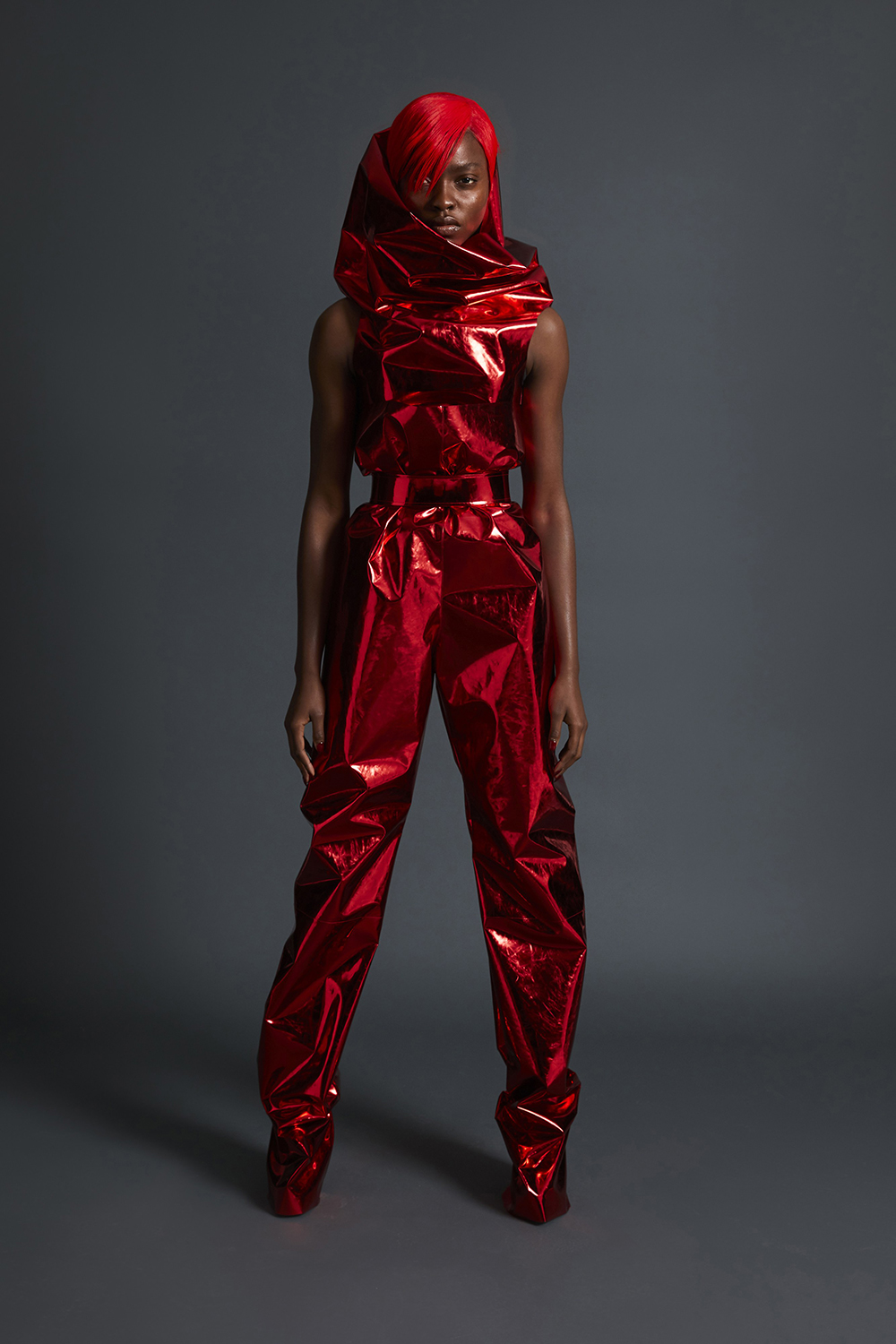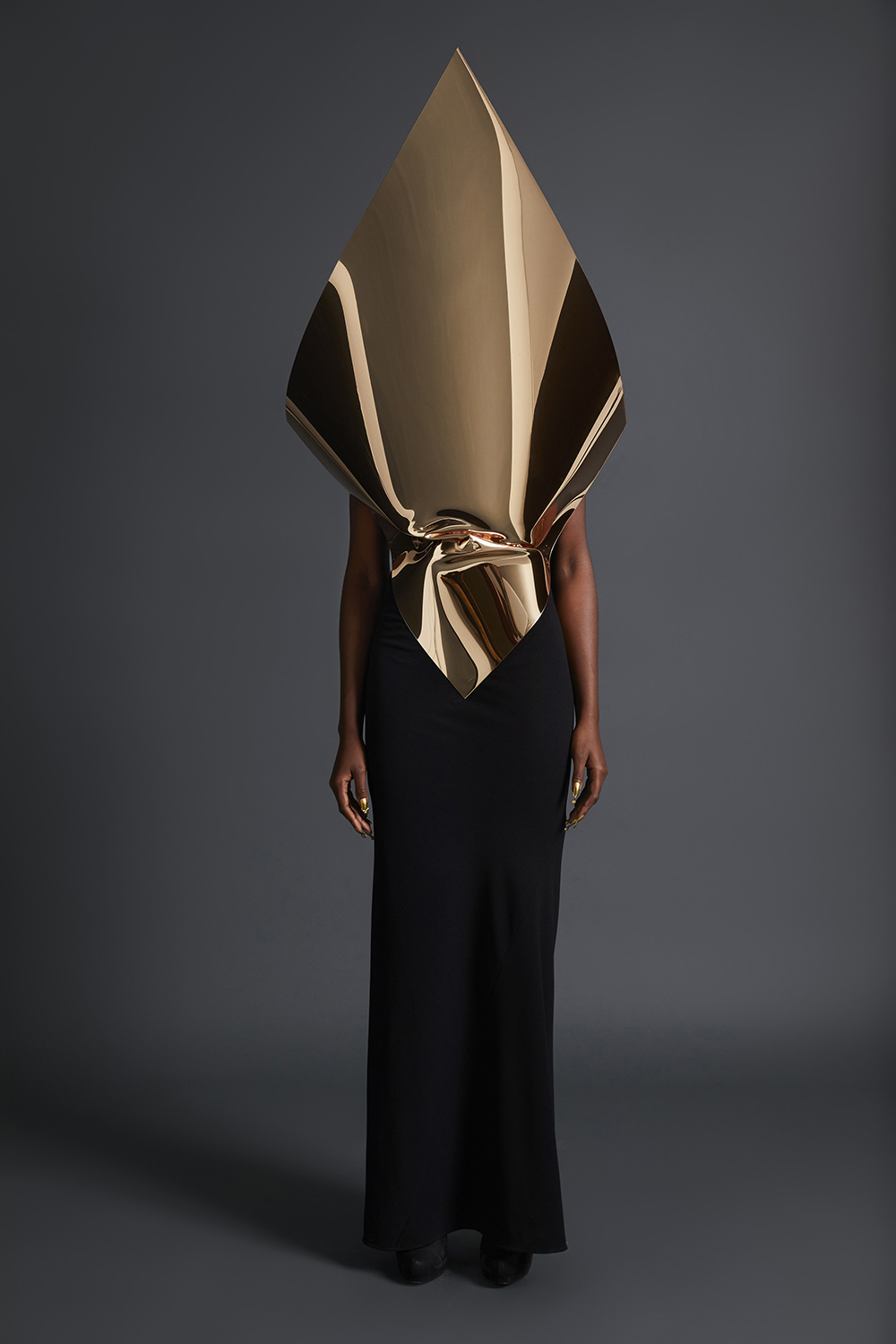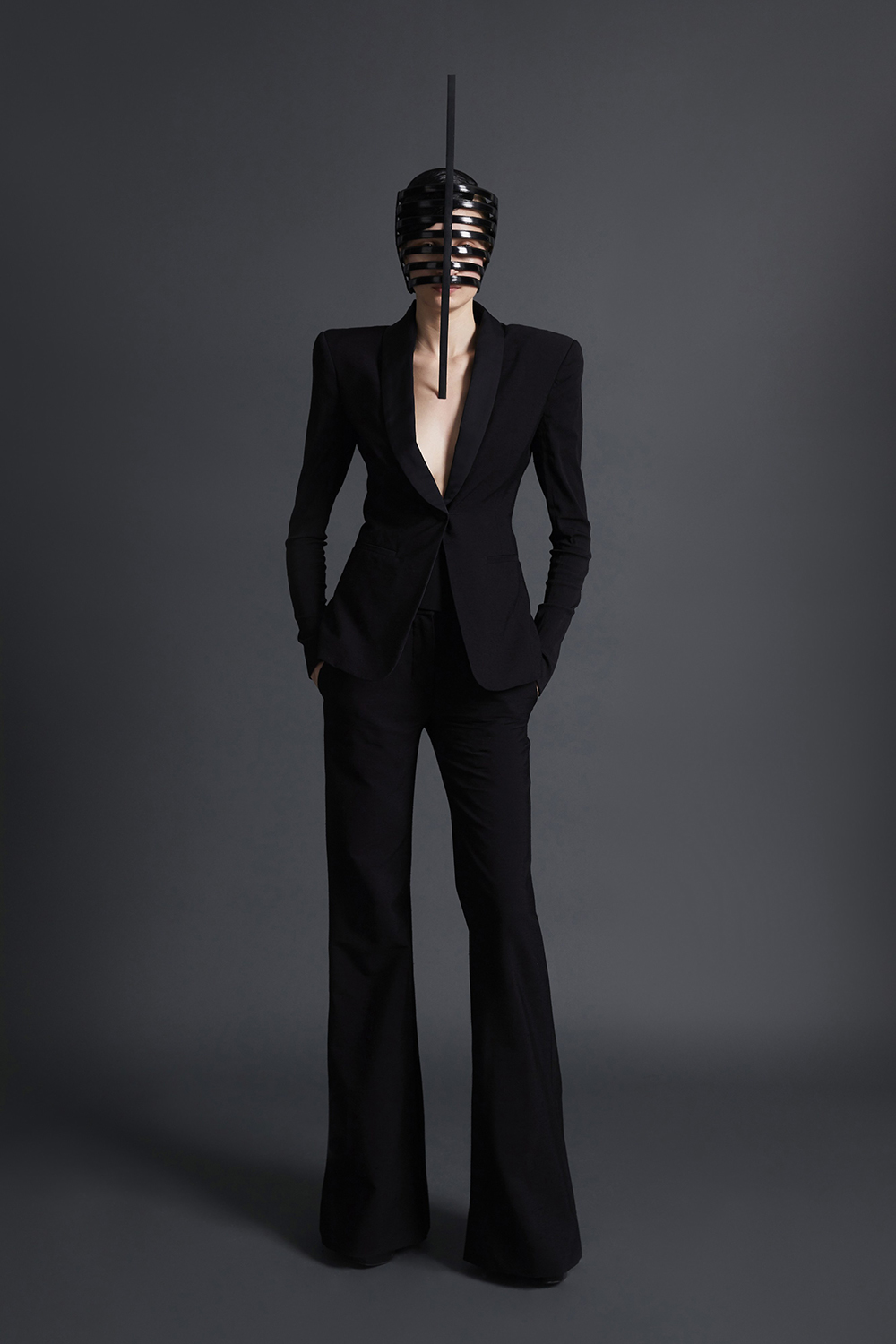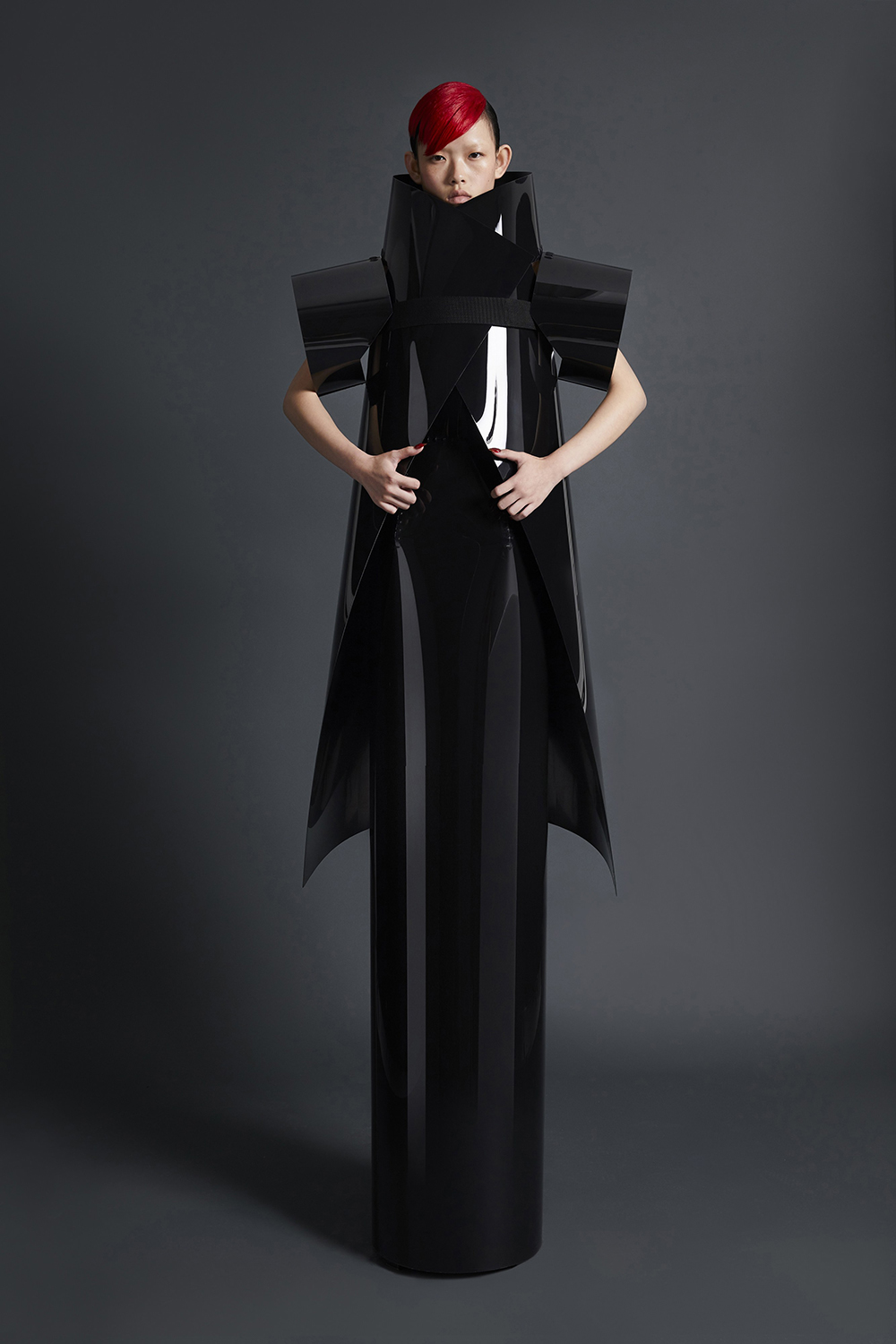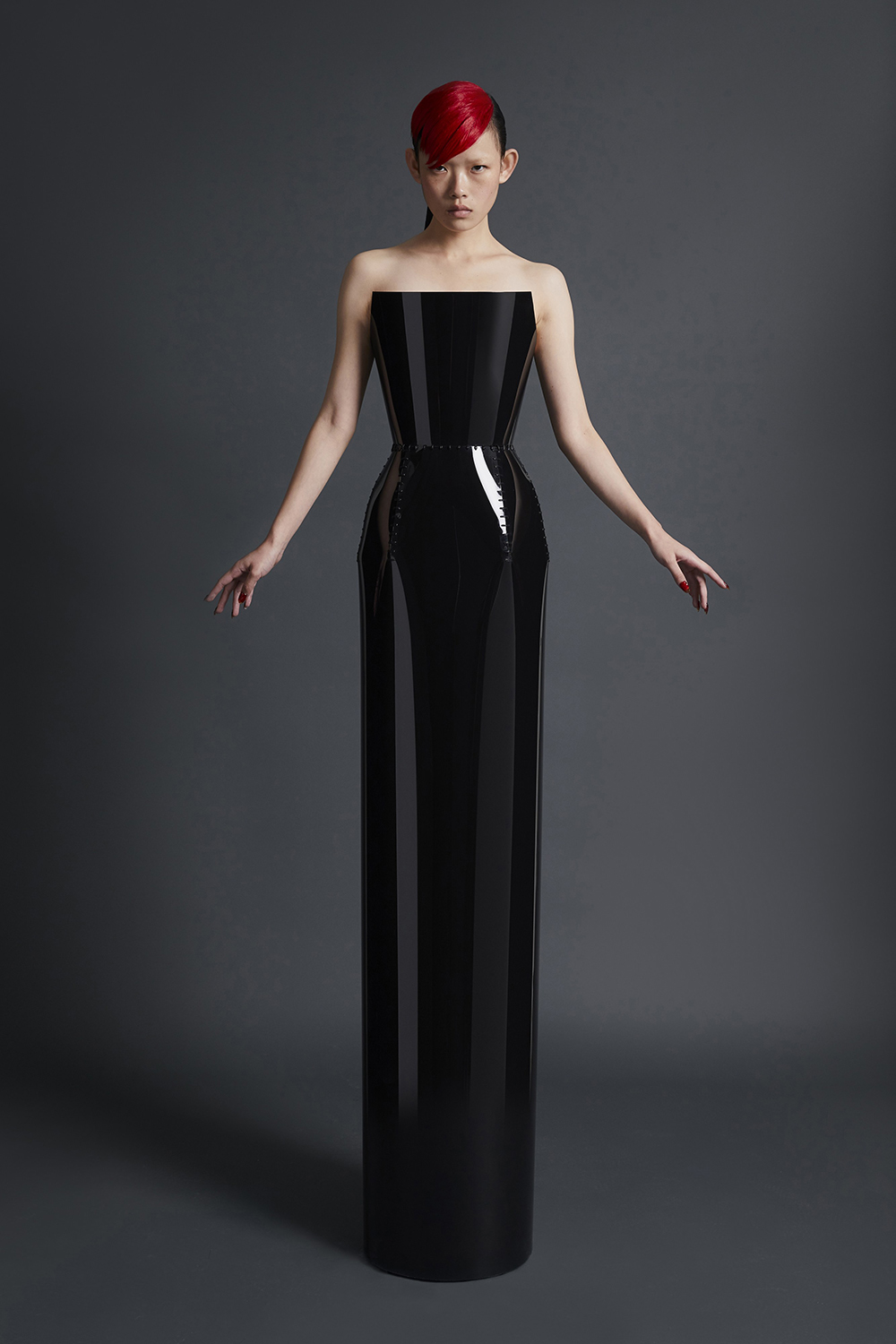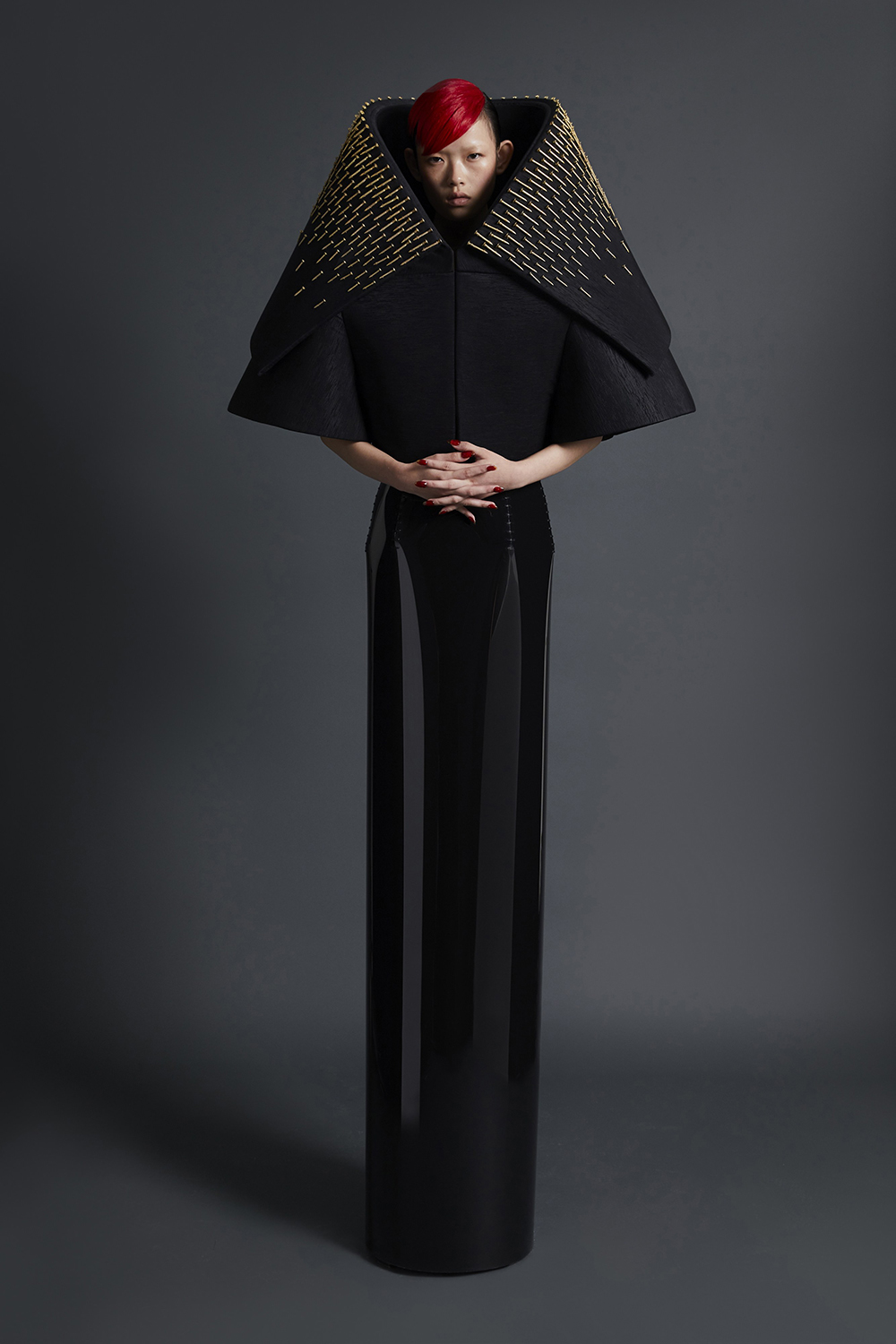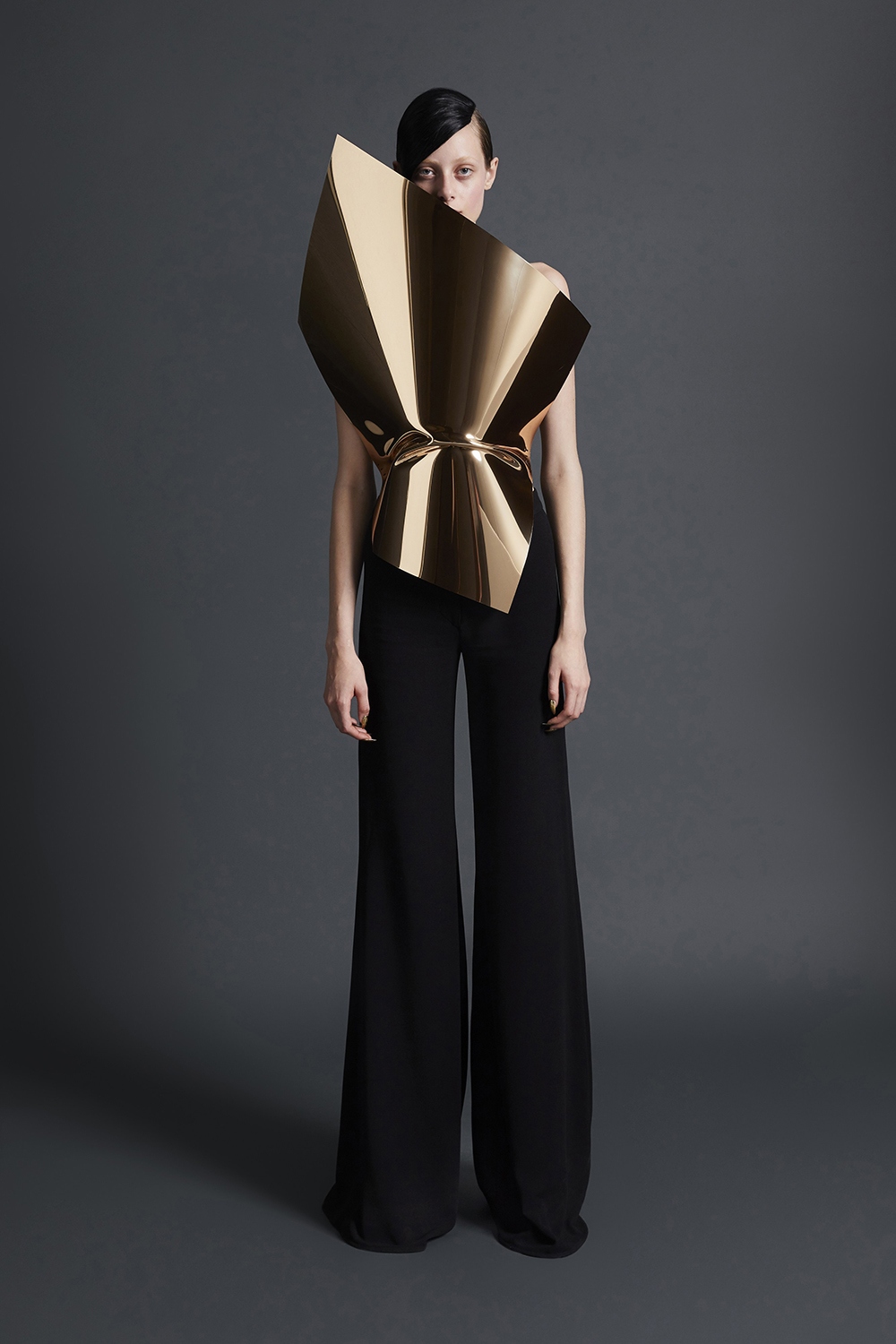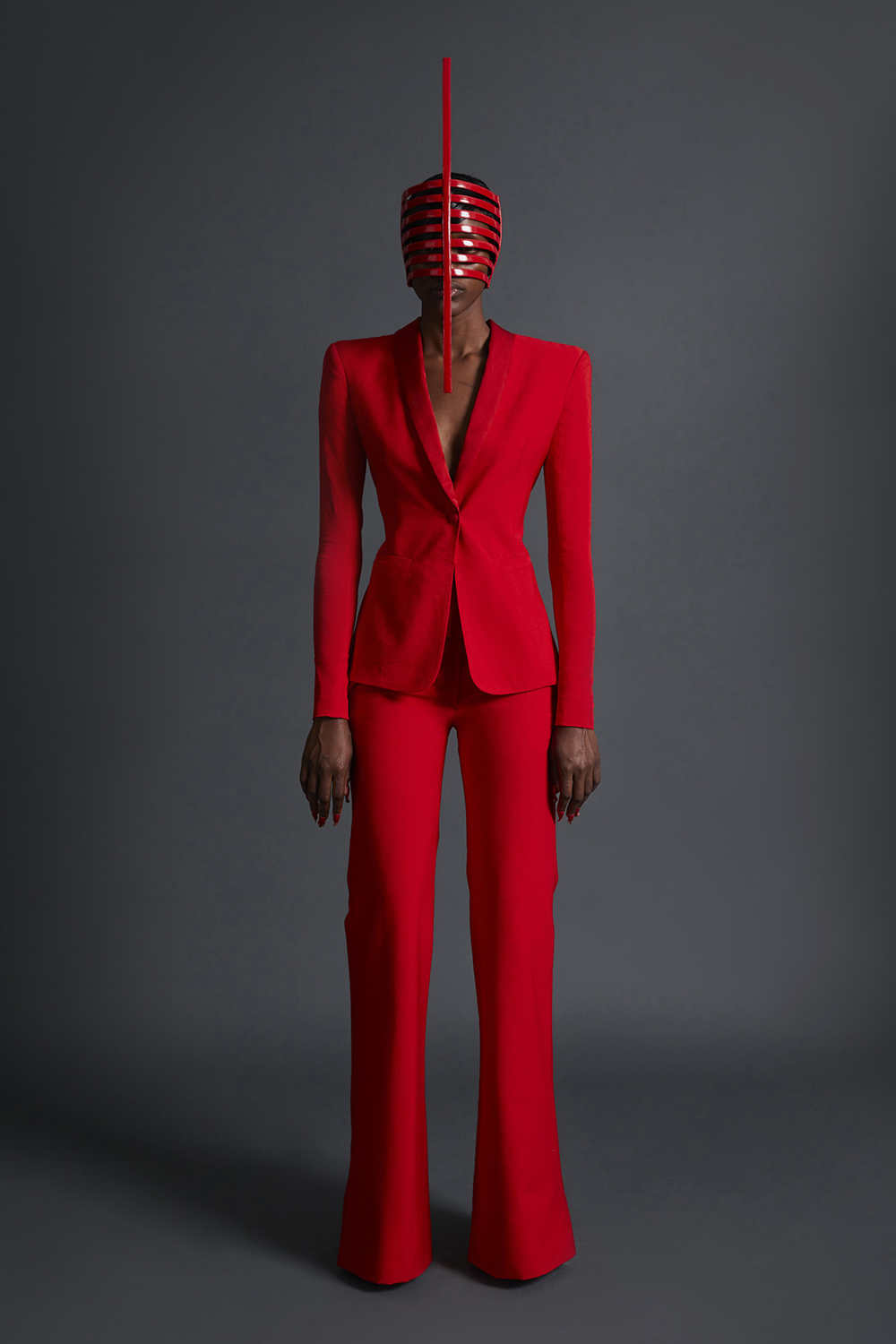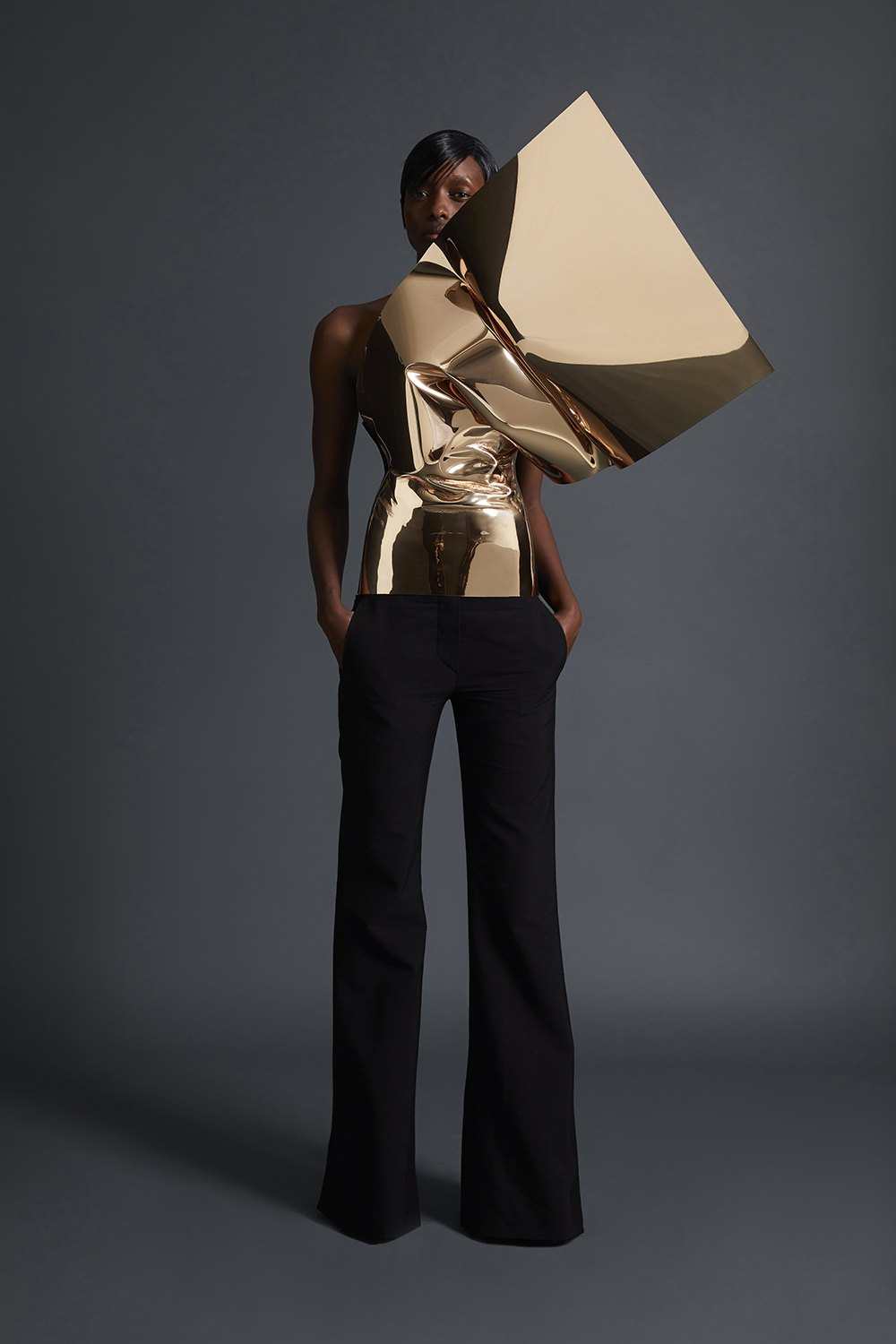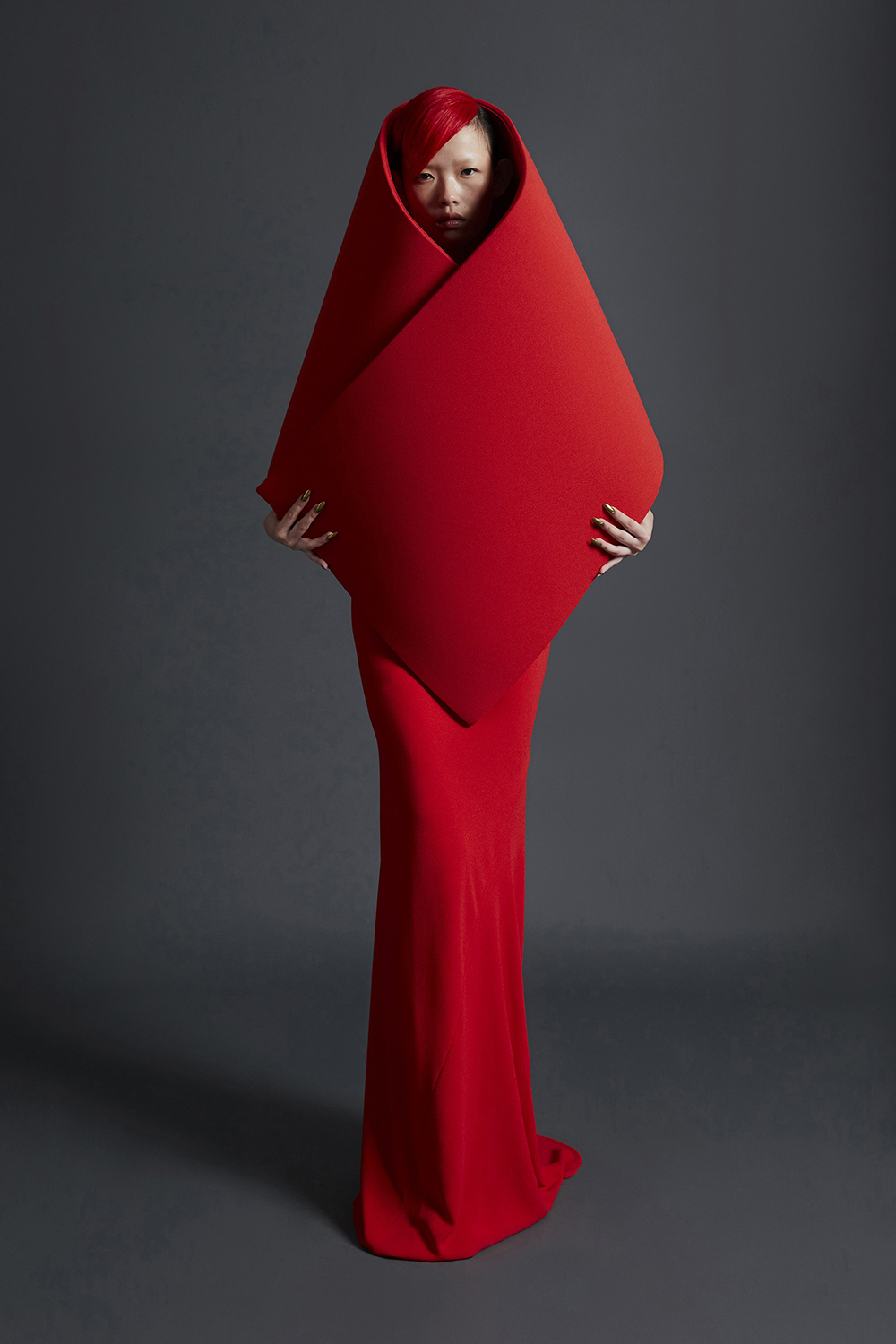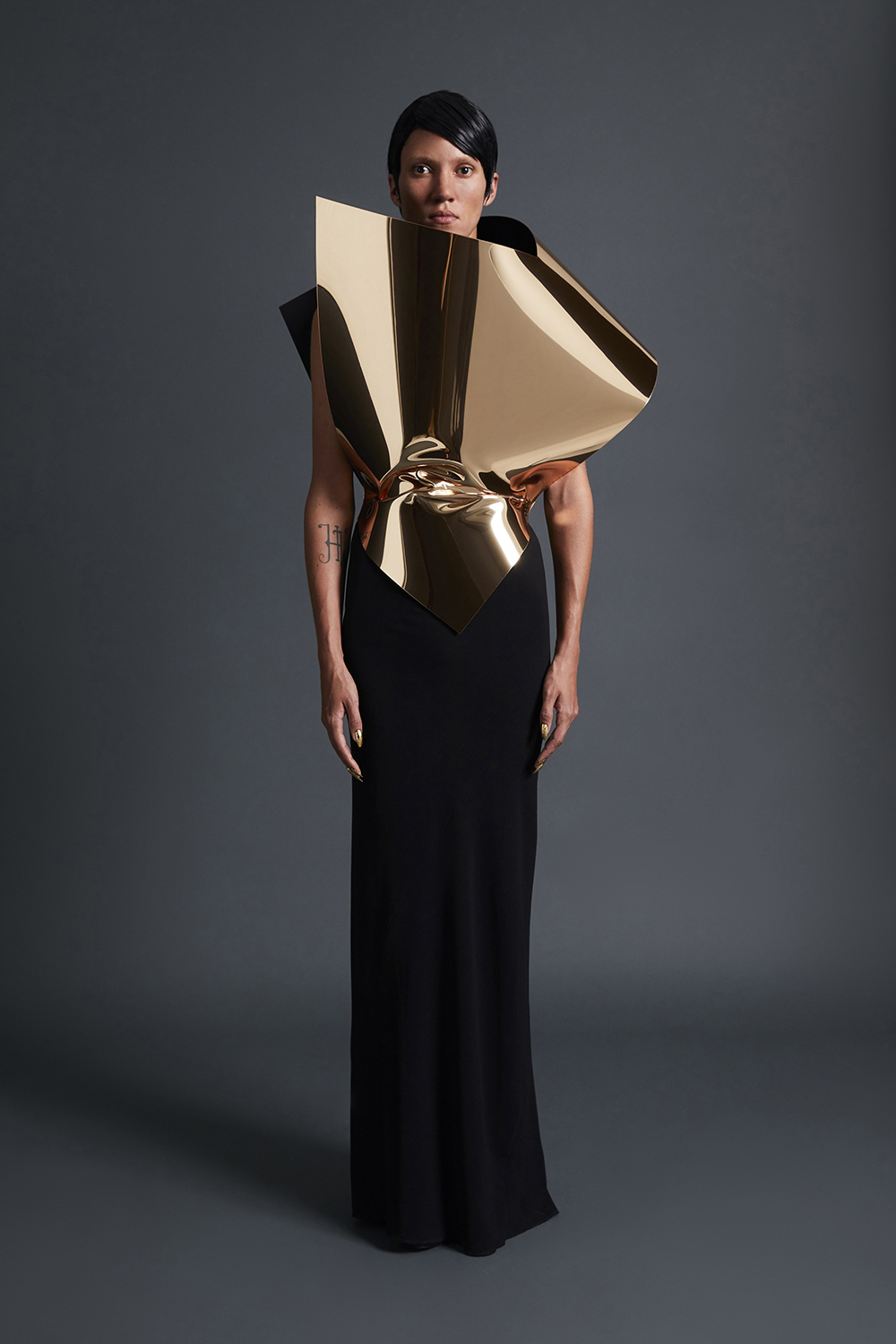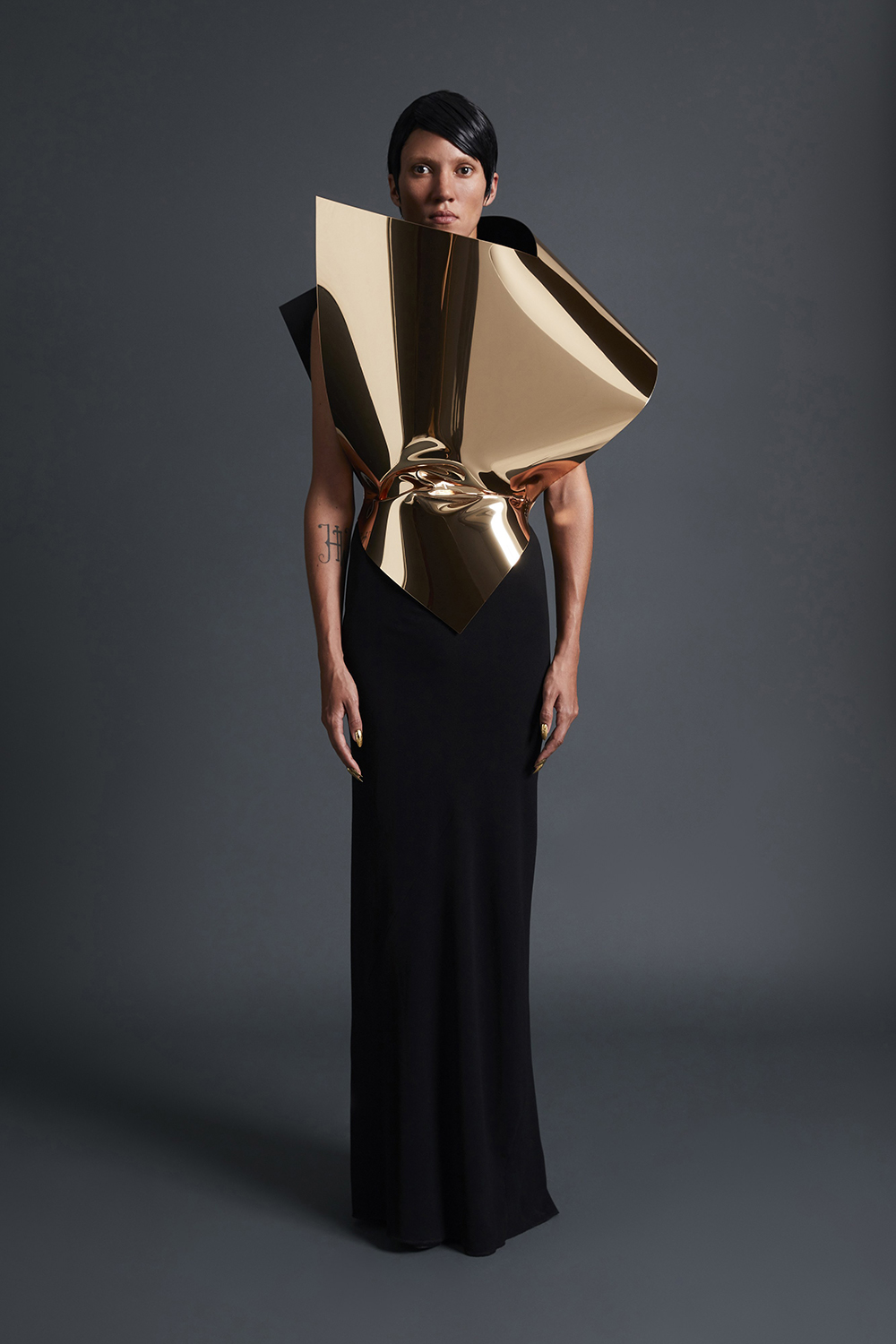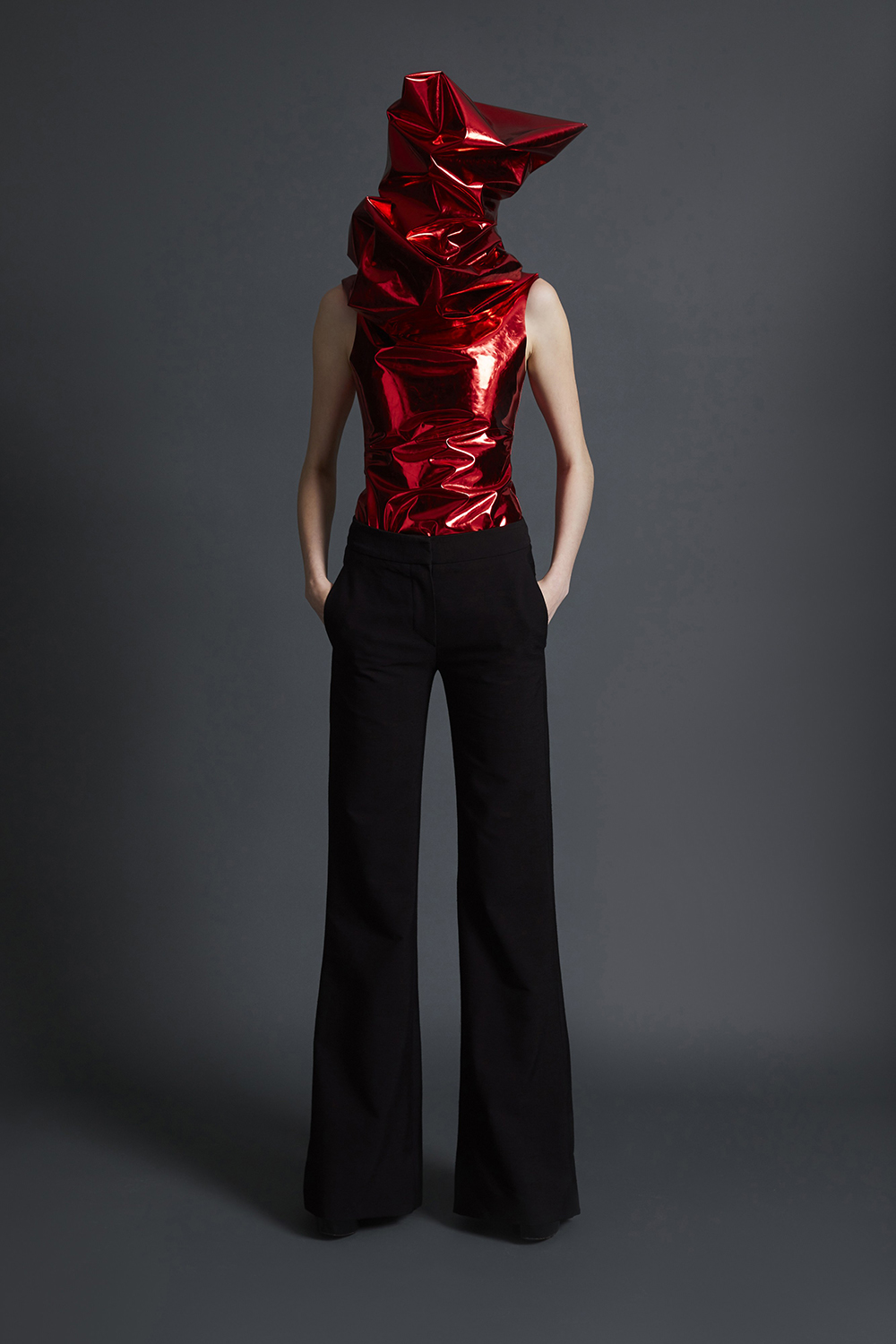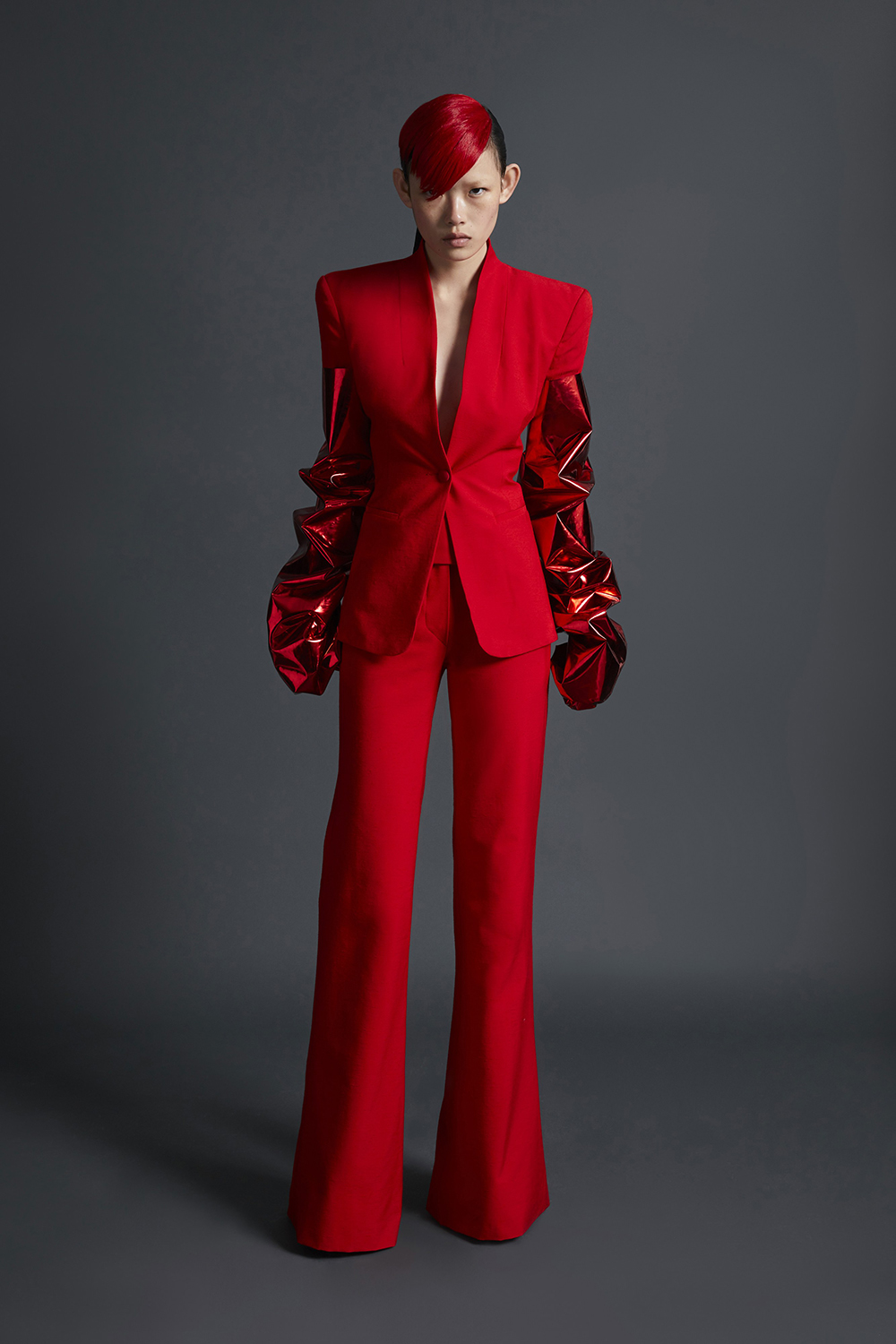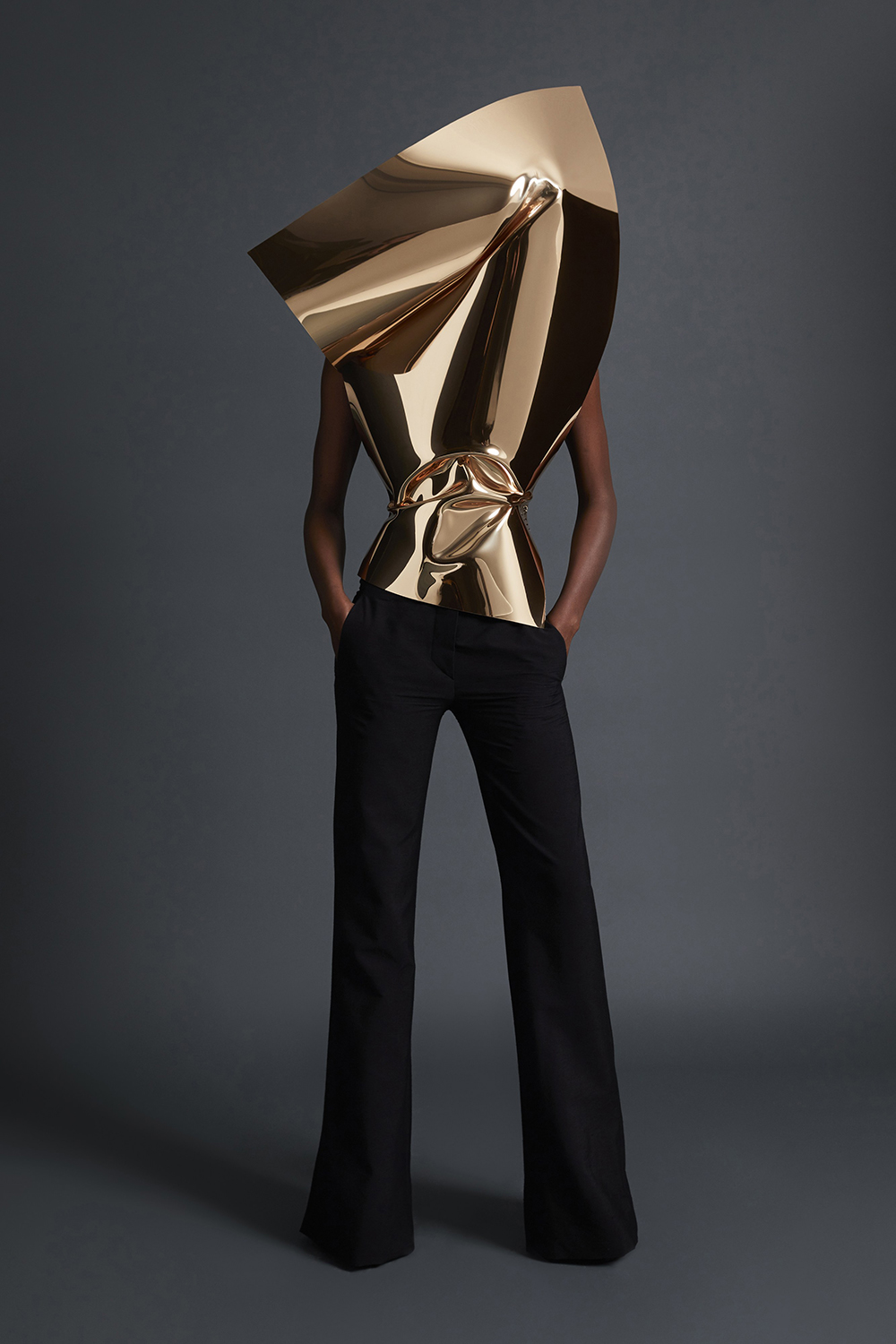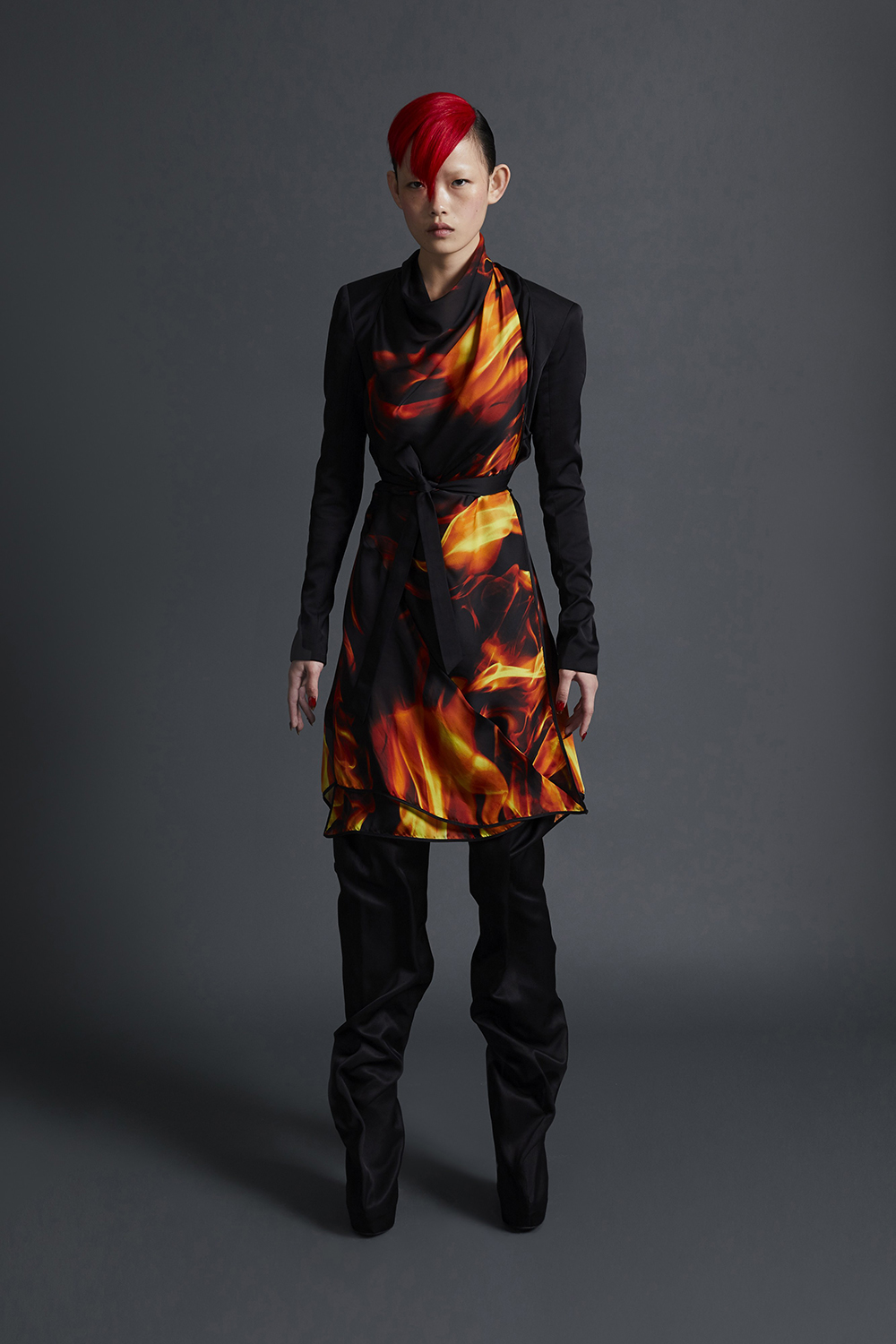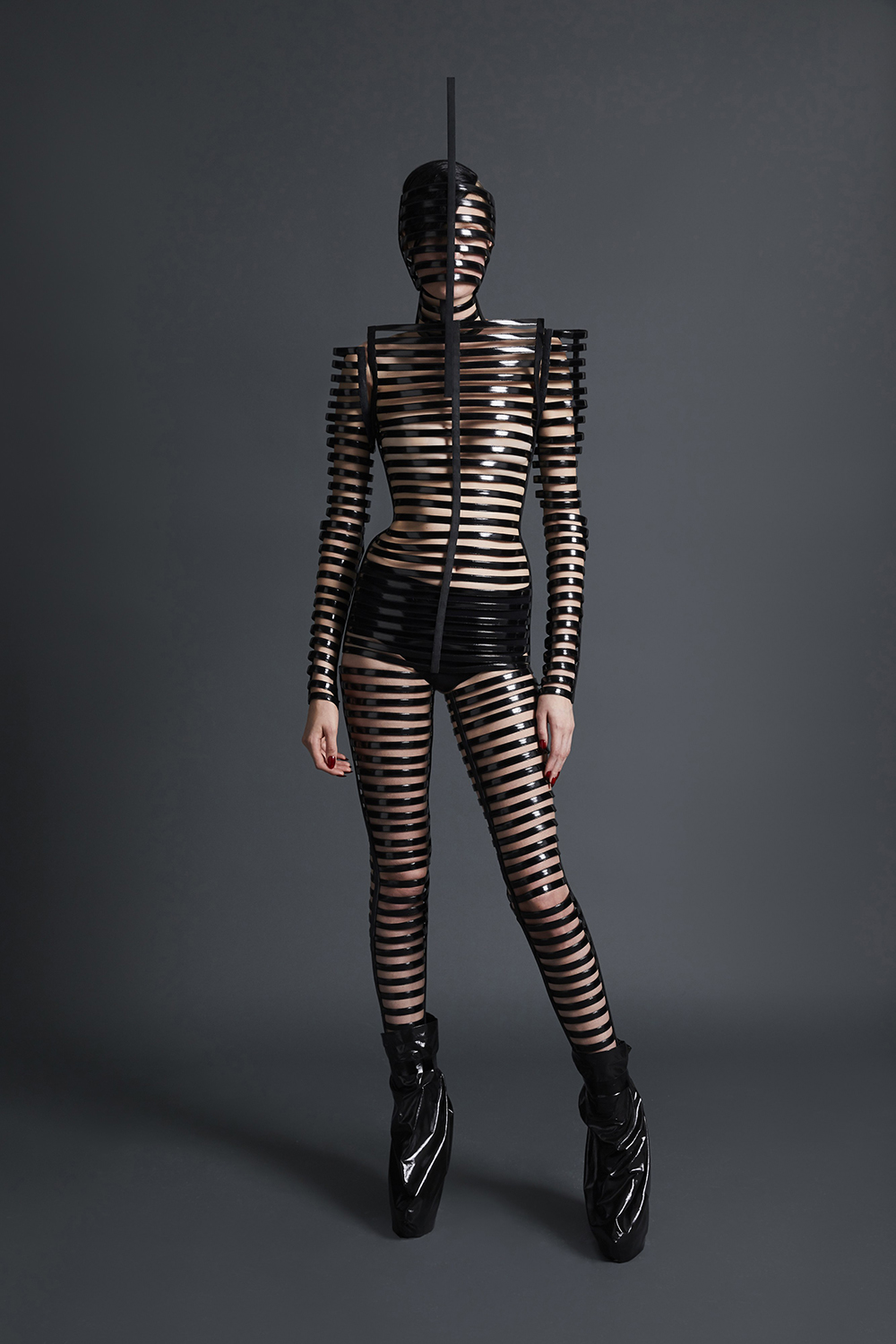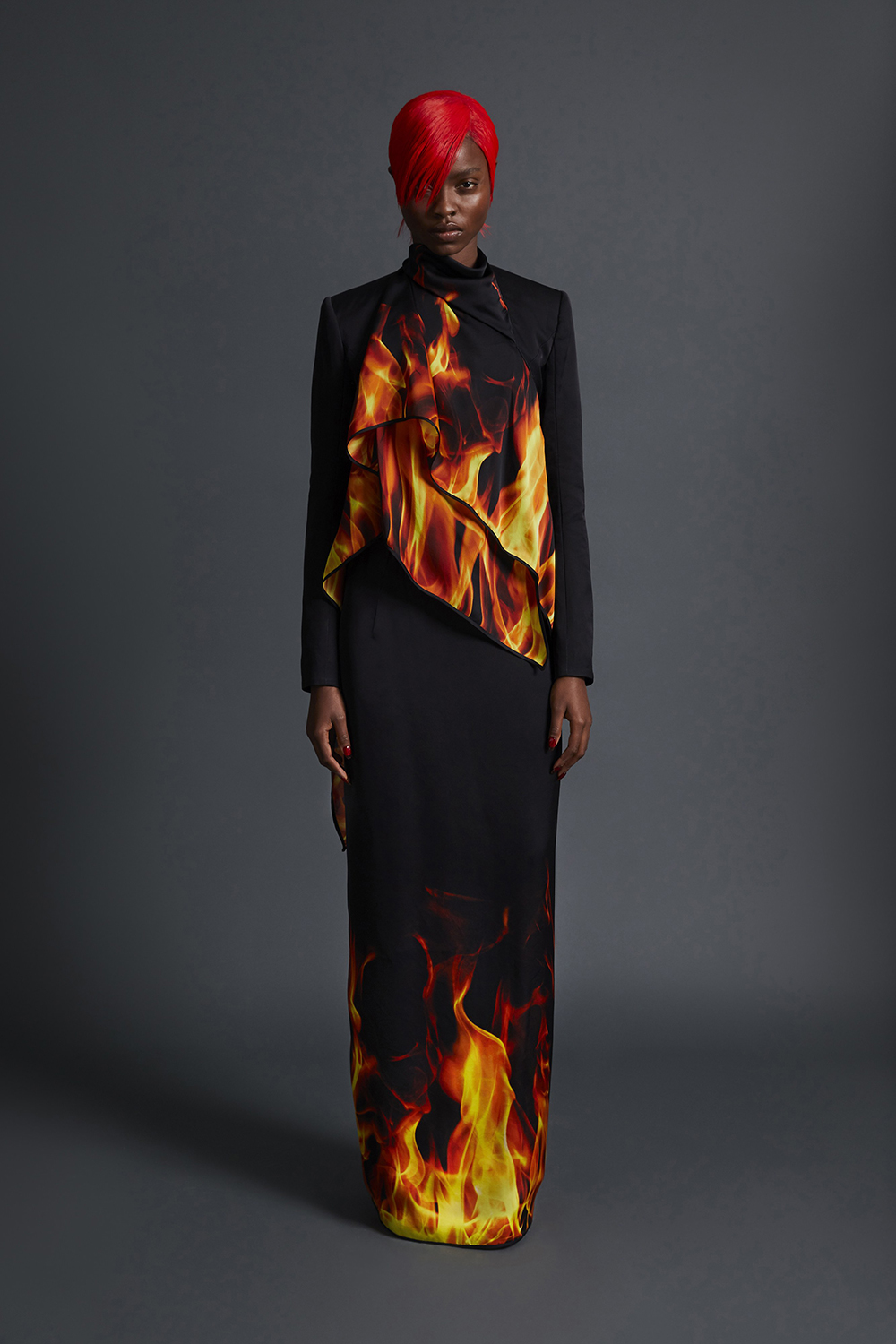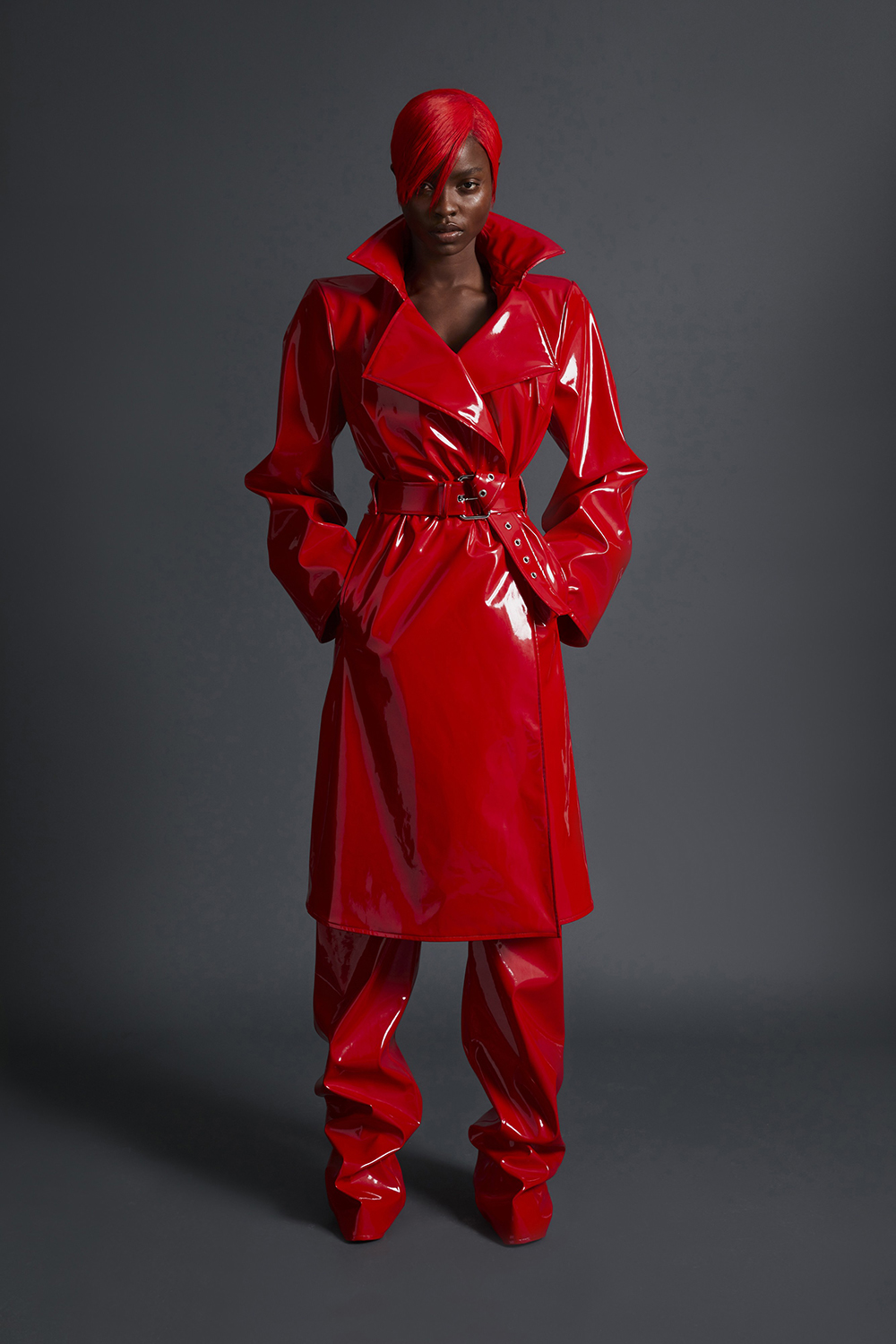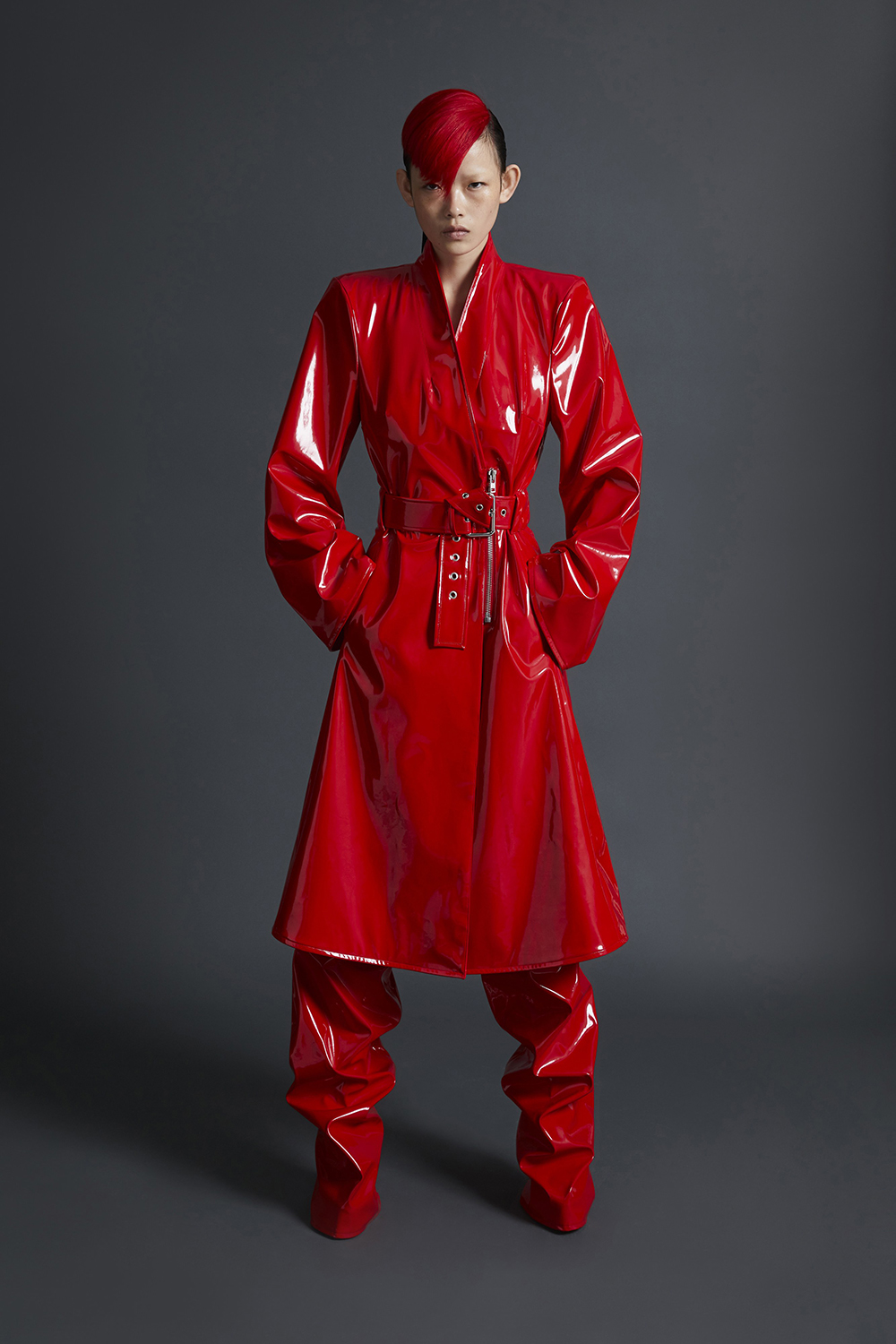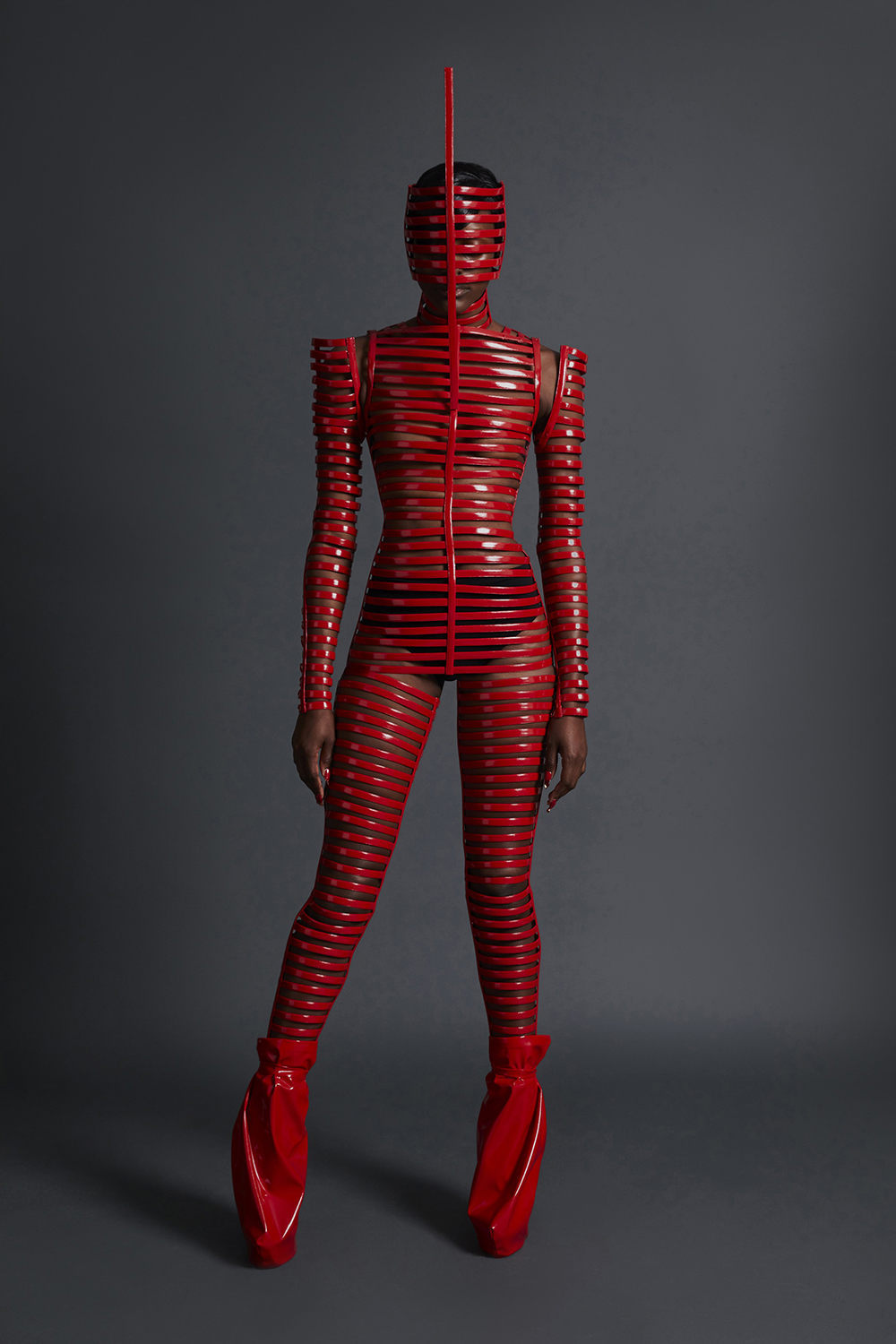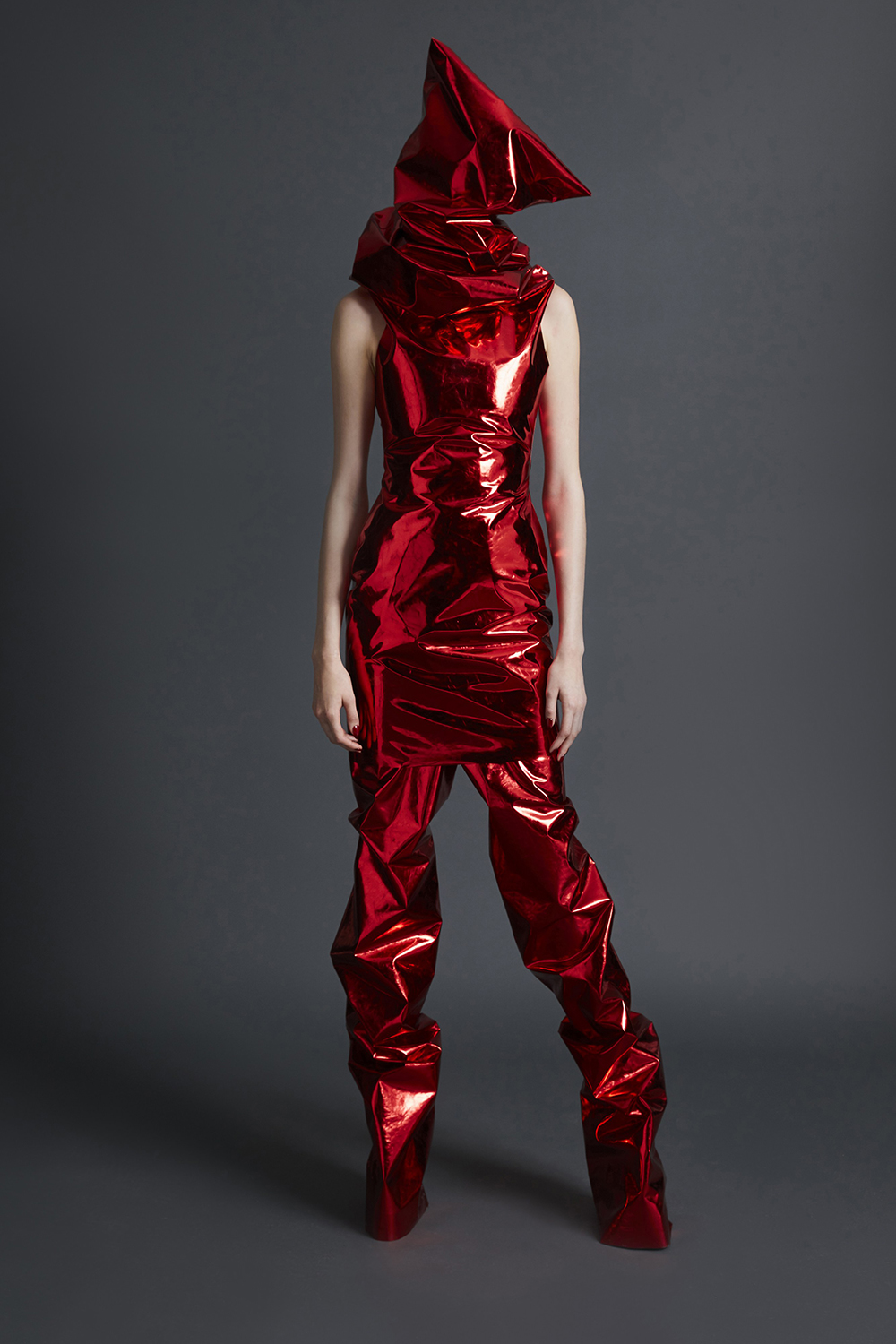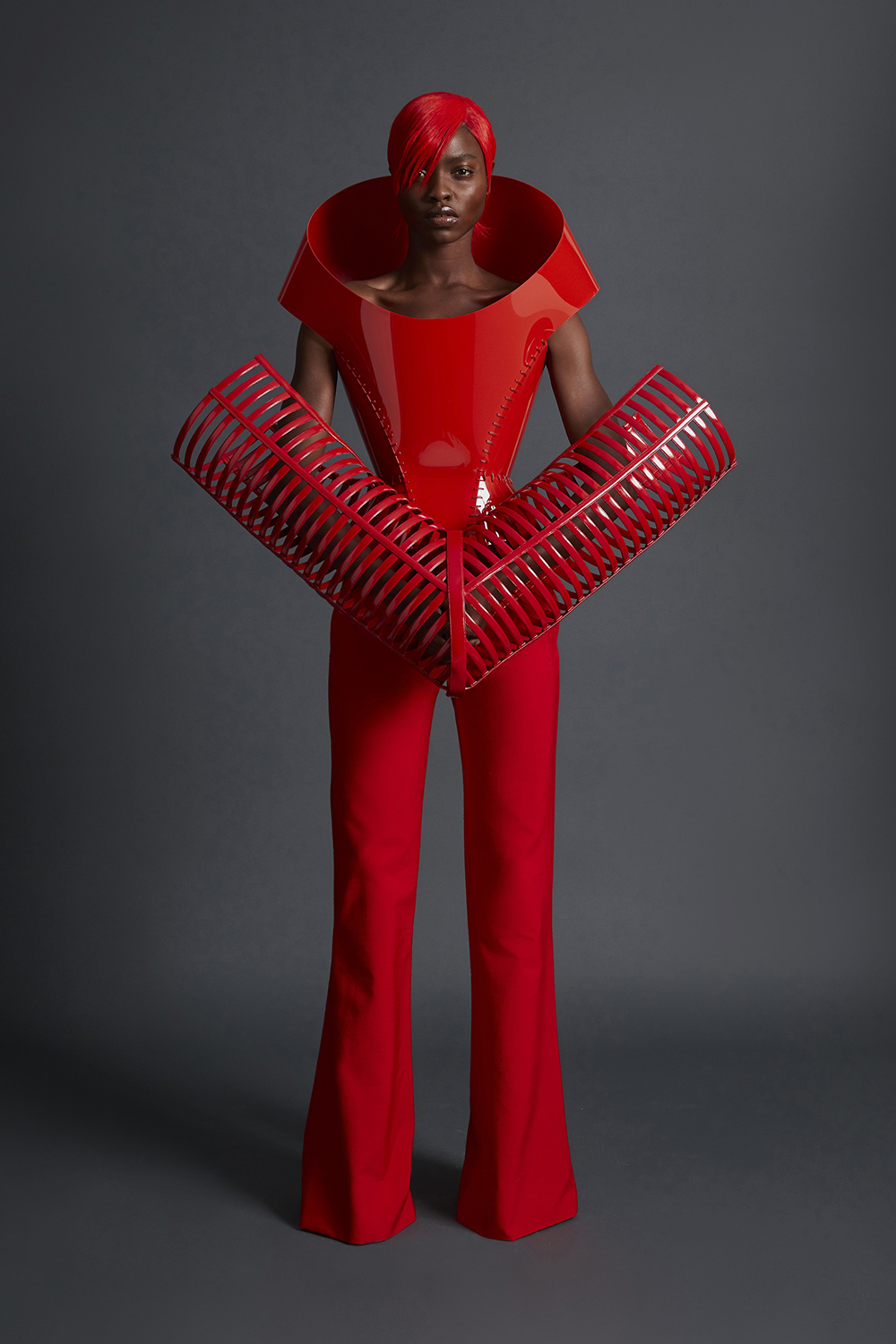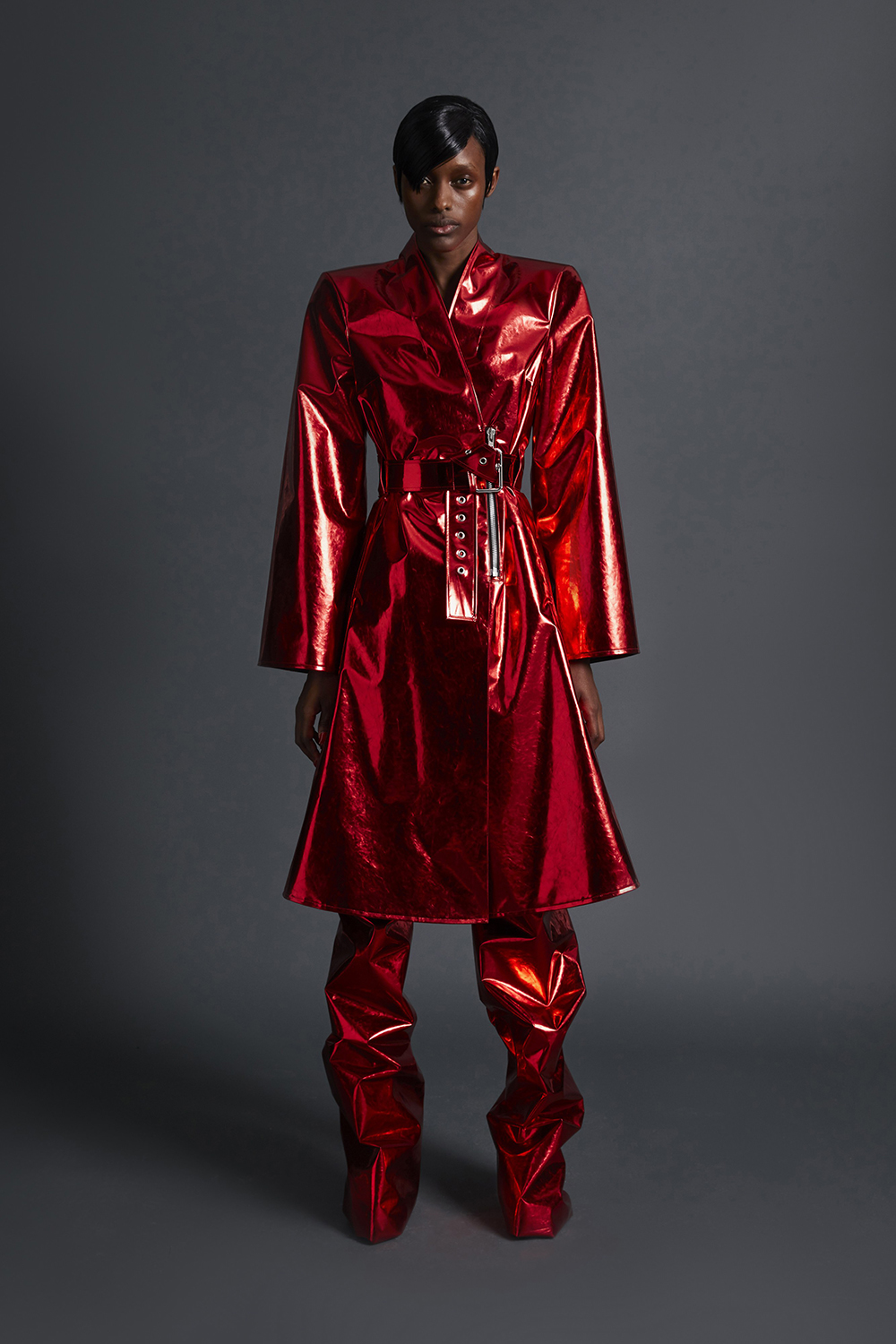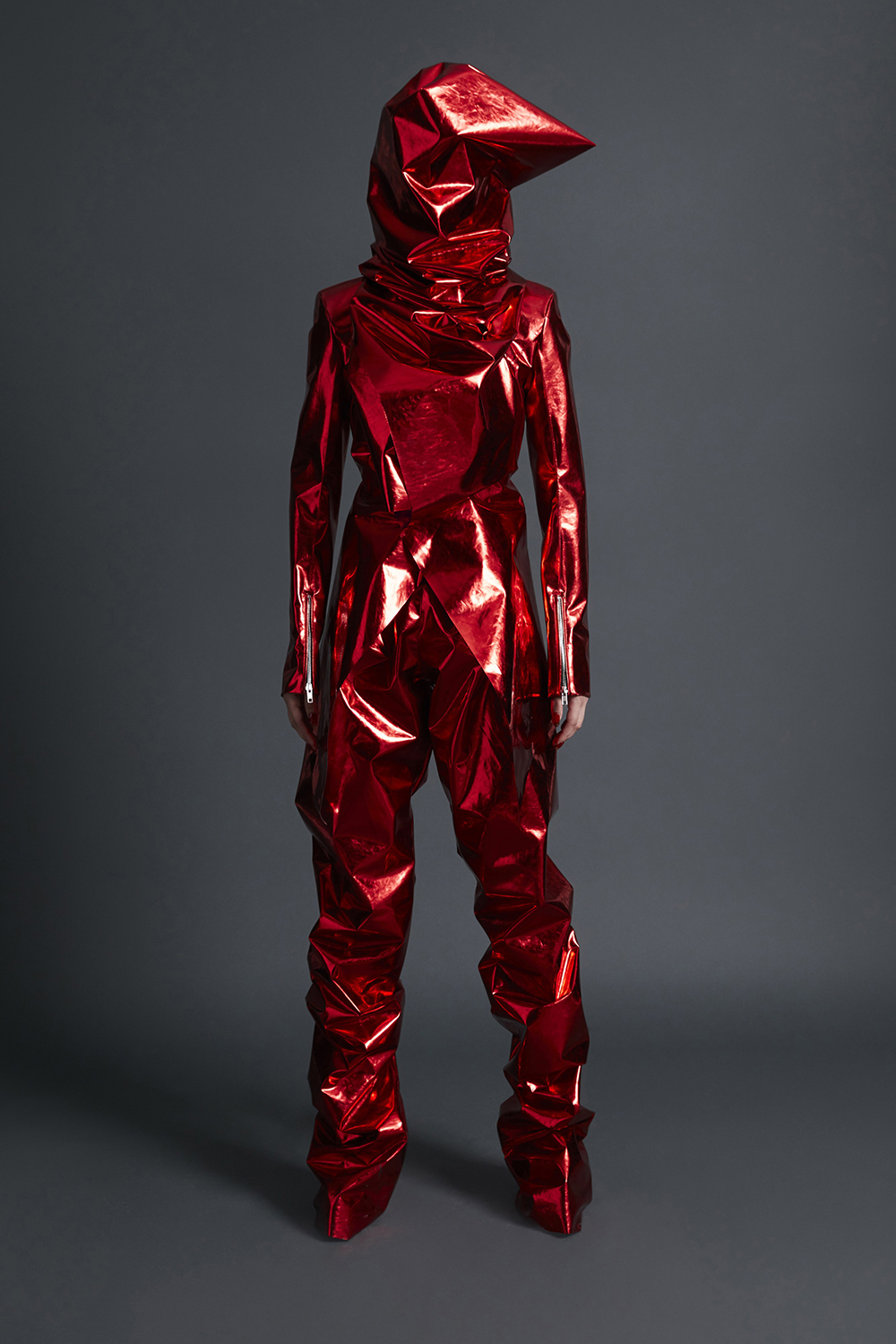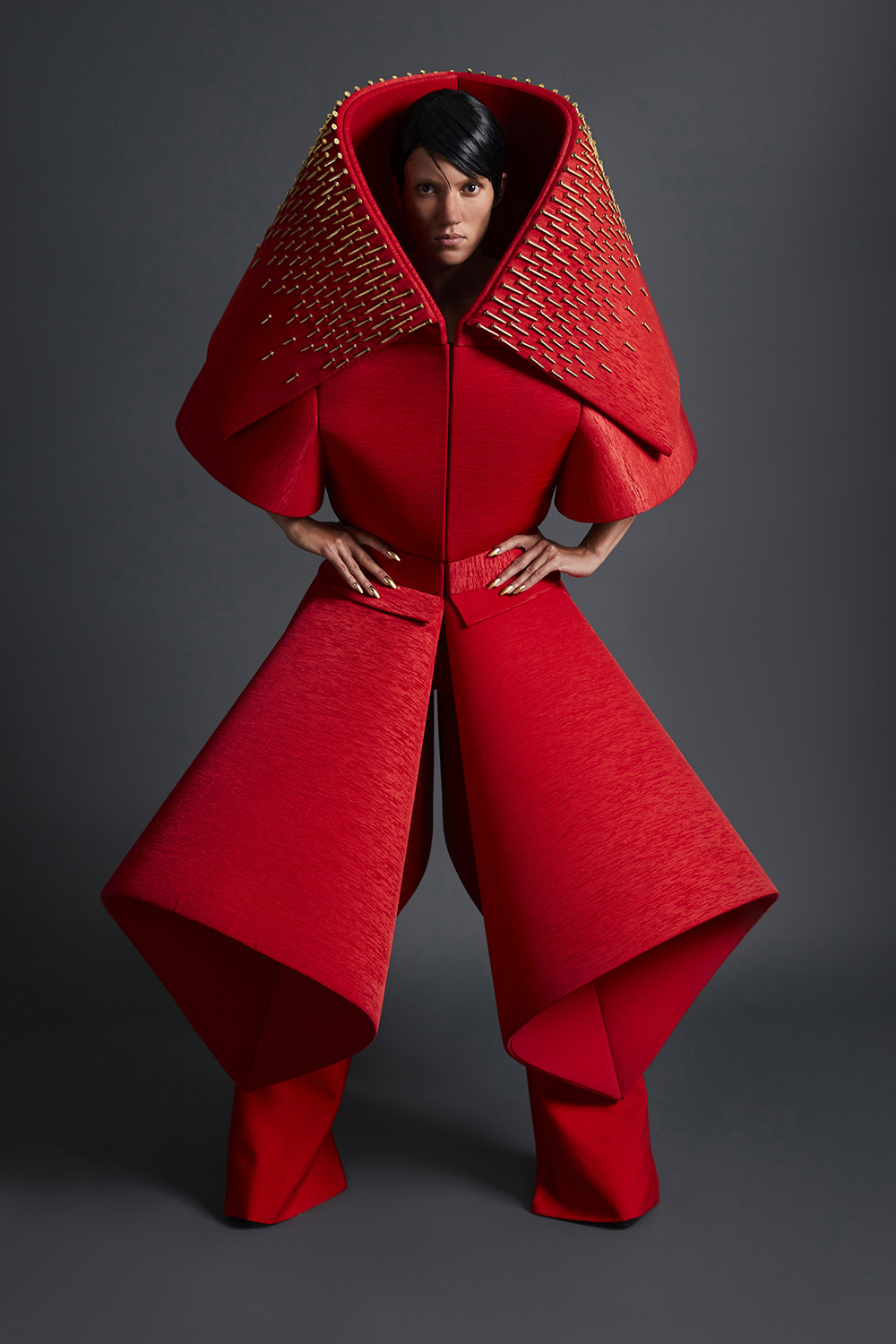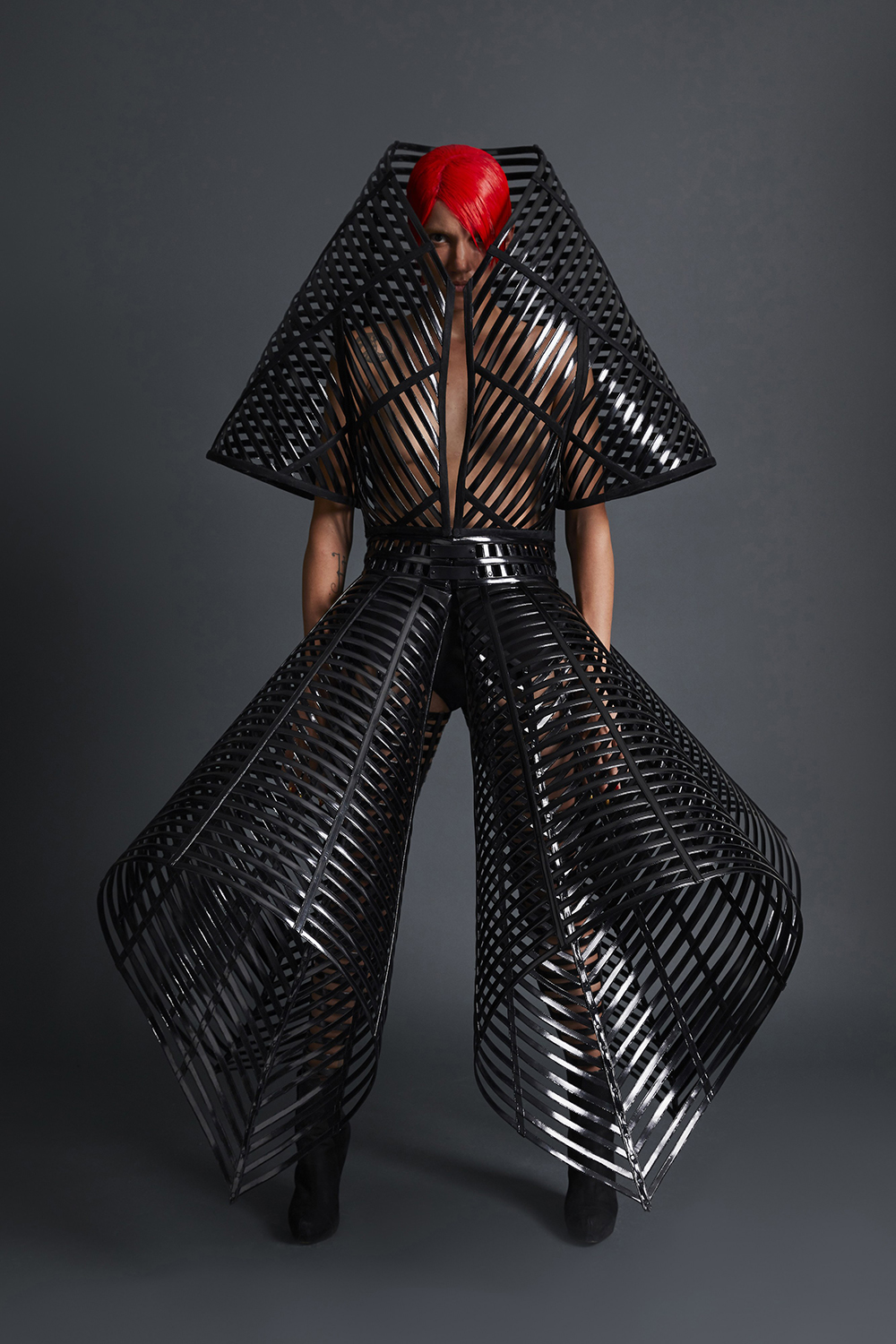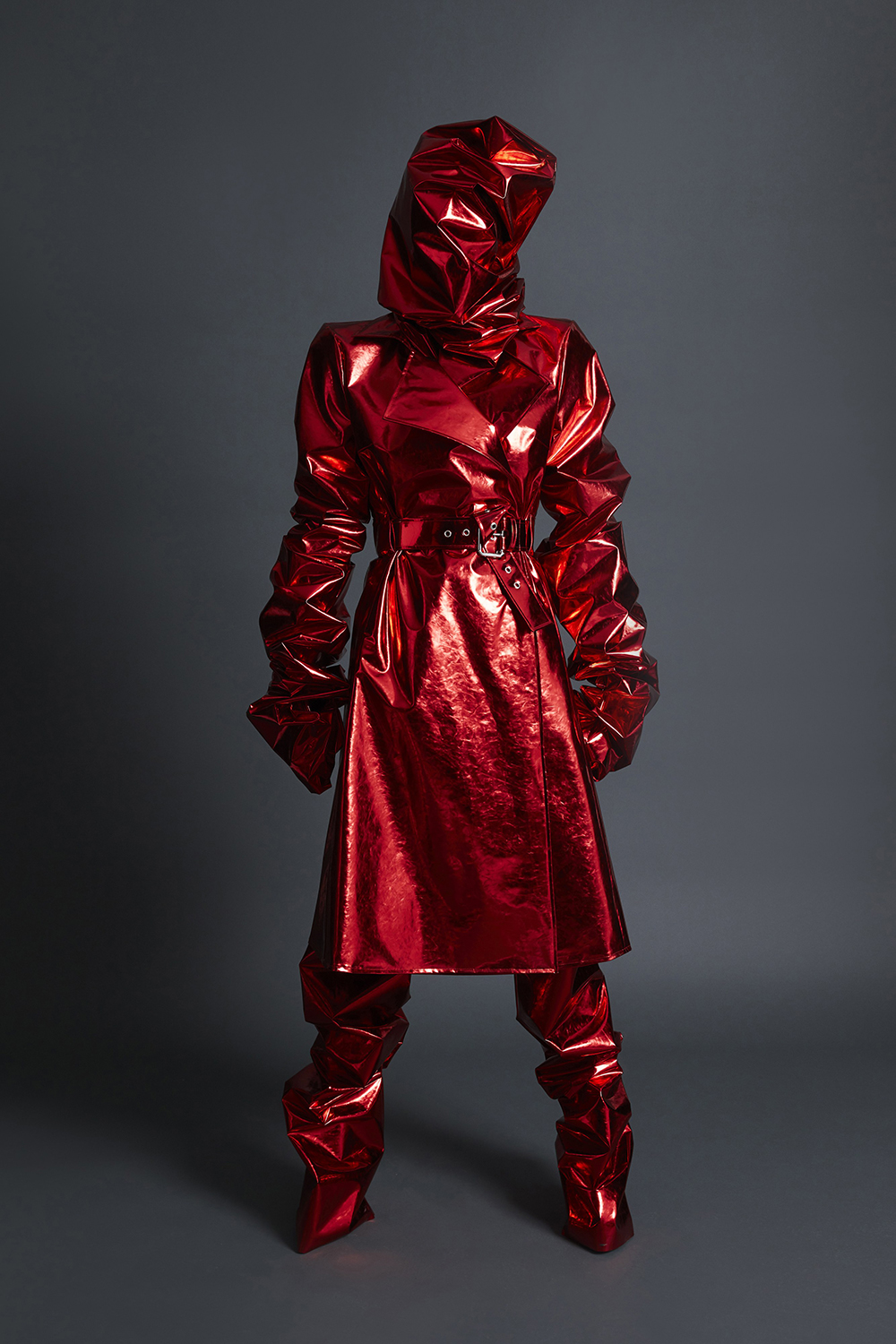You can add Gareth Pugh to the lengthening list of designers taking a pass on a fashion show. In lieu of a catwalk, Pugh decided to make a short film expressive of his latest collection. Working with storied photographer Nick Knight as director, choreographer Wayne McGregor, and artist Olivier de Sagazan, among a host of collaborators, Pugh debuted his pièce du cinéma on what is—apparently—the largest screen in Europe. Pugh’s screening this afternoon was preceded by a bit of live theater: Animal rights activists lined the walkway into the show, shouting “shame on you!” at attendees as they entered. As it turned out, the sturm und drang was a fitting aperitif for the drama that followed. Pugh’s film was a hair-raiser, in ways both lurid and sublime.
Whatever you make of his clothes from a practical wardrobe perspective, Pugh has always been a creator of indelible images and a strong storyteller with his fashion. It’s not hard to imagine him following in the footsteps of Tom Ford and the Mulleavy sisters in developing a career, or side-career, in film. Hollywood would be lucky to have him, and as for Knight: Your humble reviewer can’t recall the last time she witnessed a scene as properly primal and ghastly as the one here where Knight, on camera, reached into the clay belly sculpted on Pugh’s torso and pulled out what looked like . . . a hair baby? Eugh. And on the other hand, yours truly can recall very few instances of a garment coming as fully alive as Pugh’s fire-print dresses did in a sequence where they were worn by a troupe of gyrating dancers. Limbs appeared to emerge from an inferno, first devoured then revived by purifying flame.
This was a collection born in fire. Pugh seemed to be establishing his own creation myth here, demonstrating, via allegory, the tortured process of how his avant-garde looks come to be made. That would be a mortifyingly pretentious project were it not for the fact that Pugh’s collection, in transcendent instances, earned that pretension. It wasn’t his cage-like constructions that did it, impressive as they were from a craft perspective, or his sculptural coats, or column gowns. No, what was extraordinary here were Pugh’s crinkled metallic looks: A red cowl-collared jumpsuit, baggy in the leg and nipped at the waist, for example, did the nowadays vanishingly rare thing in fashion of positing a vision of style’s future. These and similar looks weren’t riffing on a current trend or paying homage to a bygone aesthetic. They were asserting something new—and better yet, a new thing that invited you in with its realism, even as it challenged your eye to adjust to what it hadn’t seen before. How does a designer—or any creative person, really—give birth to a new reality? That was the story Pugh’s film attempted to tell. In its highlight moments, this collection made you believe that Pugh was a man who could tell it.
